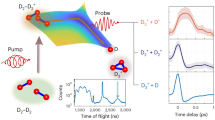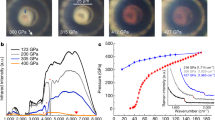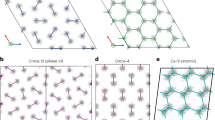Abstract
KAPLAN1 recently succeeded in exciting, in the afterglow of nitrogen, a line, λ 3471 A., that probably corresponds to the forbidden transition 2P ↠4S of NI. Theoretically it is very interesting and curious to see that this line is emitted under relatively high pressure, at the same time as the Vegard-Kaplan bands, which are themselves forbidden.
This is a preview of subscription content, access via your institution
Access options
Subscribe to this journal
Receive 51 print issues and online access
$199.00 per year
only $3.90 per issue
Buy this article
- Purchase on Springer Link
- Instant access to full article PDF
Prices may be subject to local taxes which are calculated during checkout
Similar content being viewed by others
References
Kaplan, NATURE, 141, 645 and 1139 (1938).
Dufay, J. Phys., vii, 5, 523 (1934).
Gauzit, J. Phys., vii, 5, 527 (1934).
Kaplan, Quatrième rapport de la Commission pour l'étude des relations entre les phénomènes solaires et terrestres, p. 140 (1936).
See, for example, Mathur, L., and Sen-Gupta, P. K., Proc. Acad. Sci. U.P., 5, Part 2, 187–226 (1938).
Bernard, NATURE, 141, 1141 (1938).
Slipher and Sommer, Naturwiss., 171, 802 (1929).
See Kayser, "Handbuch der Spektroscopie", 5, 57.
Author information
Authors and Affiliations
Rights and permissions
About this article
Cite this article
GAUZIT, J. Probable Dissociation of Nitrogen Molecules in the High Atmosphere. Nature 142, 572–573 (1938). https://doi.org/10.1038/142572c0
Issue Date:
DOI: https://doi.org/10.1038/142572c0
This article is cited by
-
Über das Vorkommen atomaren Stickstoffs in der hohen Atmosphäre
Die Naturwissenschaften (1938)
Comments
By submitting a comment you agree to abide by our Terms and Community Guidelines. If you find something abusive or that does not comply with our terms or guidelines please flag it as inappropriate.



